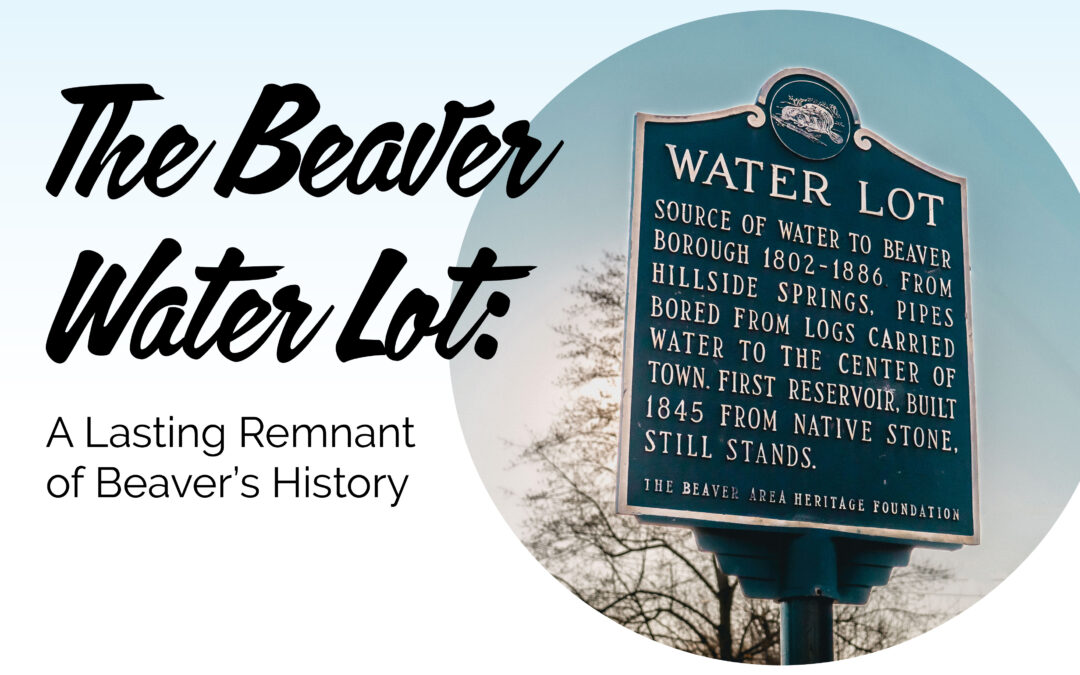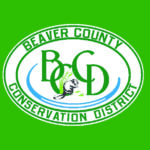In the modern era, we take access to fresh water for drinking and bathing for granted. Turn on the facets in one’s kitchen or bathroom and water is readily available. In earlier times, that was not the case and therefore human habitation and population concentration was largely contingent on a ready supply and access to water. For Beaver, the source of water for the town’s earliest inhabitants came from the springs that were abundant along the hillsides abutting Brighton Township. In fact, Beaver’s history in the early 19th century was largely focused on water retention and distribution within the town. While today Beaver is divided politically into three wards, in the early 1800s the town was divided into two sections: a Western Water District and an Eastern Water District. This distinction underscored the importance of water to the town. The water lot opposite Bouquet Park on Fifth Street was the source of water for the Eastern Water District, and the stone reservoir that remains there today is the only standing artifact of the town’s 19th century municipal water system.
The earliest mention of a municipal water retention structure is a springhouse built in 1807 at the current water lot site by the Beaver Council authorities. As the population of the town increased, a reservoir was added in 1812 to collect water from said springhouse. The reservoir measured 11 feet by 13 feet with a depth of 7 feet. Water was distributed in the town through a series of hollowed logs. For the next several decades, the Beaver Council debated and discussed the need for a larger structure. Finally, on June 21, 1845, the Beaver Council resolved that two reservoirs be built: one at the spring at the upper end of the present water lot reservoir site, and one in the western line of water works (i.e., the stream that flows alongside Dutch Ridge Road and Galey Boulevard). Borough Council member Daniel Agnew (and later President of the Pennsylvania Supreme Court) invited proposals for providing materials and construction of the two structures. On July 2, 1845, Council met and accepted the proposal by brothers Henry and Jacob Koch for completing the two reservoirs. Sadly, Henry Koch fell ill and died before construction began. Jacob Koch then partnered with David Martin to complete the contract, but not before reapproaching Council and proposing to alter the reservoir specifications to be “arched over with stone and gable parapet walls.” The builders also proposed to broaden the supporting walls to carry the weight of the vaulted reservoir ceiling. The proposed vaulted additions would not exceed a cost of forty dollars for each reservoir, according to Council minutes. The structures were completed by the end of 1845. The reservoirs were decommissioned and abandoned in 1886. A new water system and pumping system was implemented to replace the reservoirs.
Interestingly, Henry Koch owned the property adjacent to the eastern water lot district, which remained in his family for many years, and today the house at 434 Fifth Street is the original house of Henry Koch. The Koch family, German immigrants to the United States, later Anglicized their name to Cook—a name known to many Beaver residents as the family of Fred Cook, a partner and chief officer of Cook Anderson, a construction firm housed on Fifth Street where the Beaver Village Apartments of the Housing Authority of Beaver County is now located.
The reservoir off Fifth Street is the one seen today on the hillside. The western water district reservoir is no longer in evidence, having been destroyed when the Borough sold the land in 1903 to John Galey who developed the area for housing. In 1969, the Beaver Area Heritage Foundation (BAHF) partially restored the reservoir and placed the historic marker on Fifth Street in 1972. Also in 1972, the BAHF Publications Committee, in conjunction with the Beaver County Tourist Promotion Agency, published a booklet by Harry Phillips entitled, “History of the Water Supply of the Borough of Beaver.” The Fifth Street reservoir and water lot were also included in earlier BAHF walking tours of the town. A recent engineering and archaeological analysis of the site determined that the reservoir roof has been damaged by a tree that grew in the back of the structure, and the springhouse behind the reservoir has collapsed from storm water erosion emanating from increased development and loss of tree cover in the Westview area of Brighton Township. As was the case in 1972, more restoration work remains to be done at the water lot so that its rightful place in Beaver’s history can be fully appreciated.











